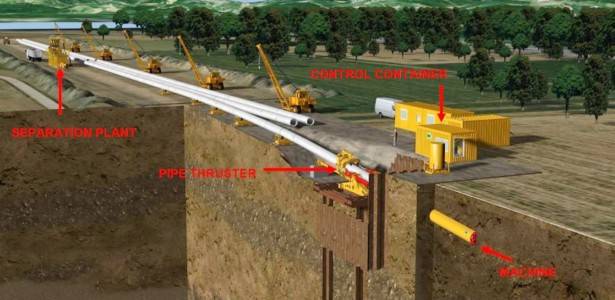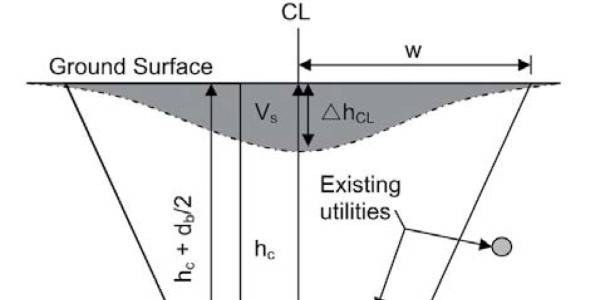Overview
TransCanada Corporation (TransCanada) proposed the design and construction of the Northern Courier Pipeline Project (NCP) to carry hot bitumen from the Fort Hills Terminal to the Suncor tank farm at the Voyageur East facility. The pipeline project included several large watercourse crossings, with the largest crossing identified being the Athabasca River, located north of Fort Mackay, Alberta. An NPS 42 x 1" wt. pipe was installed and is to be utilized as a casing for the internal 24" bitumen line.
The successful completion of this crossing considering the length and required finished borehole diameter, 2,195 m and 54", respectively, was a milestone for the HDD industry as this is the longest NPS 42 installation completed to date in North America. The HDD construction required thorough planning and implementation of an approved preliminary construction plan and the ability to adapt to changing conditions as they presented themselves in a very remote region of Alberta, Canada. Utilizing sound HDD experience and a combination of cutting-edge installation tooling and techniques, such as pilot-hole intersect gyro steering, pipe thrusters, equipment winterization, and deployment of properly sized equipment for achievement of the installation which occurred during the winter of 2015.
Michels Canada was contracted by TransCanada to perform construction of the HDD as well as the pipe makeup and pullback support of the Athabasca NPS 42 HDD. The Athabasca River crossing was part of an overall program that included six HDDs and one Direct Pipe all installing NPS 42 casing. Preconstruction plans were submitted as part of the requirement by the owner following the TransCanada HDD specifications – TES PROJ HDD Rev 1.
Mobilization to the prepared HDD work pads started in August 2016 from a staging yard that was provided by TransCanada at a nearby site outside of Fort McKay, Alberta.
Surface casing was part of the initial proposed design that had 20 m specified at both the entry and exit sides of the crossing. Soft near surface formation common to the area quickly gave way to competent formation that only allowed for the 20 m installation as designed. The steel conductor casings were both installed using a pneumatic hammer, or were excavated at the required entry/exit angles to facilitate the given designed geometry.
Entry and exit sides were set up simultaneously with full spreads dedicated on each side in preparation for staging the 1,200,000 lb. HDDs as well as a full complement of mud cleaning and recycling equipment capable of pumping and cleaning 4m3 per minute as would be expected during operations.
The pilot hole was initially drilled to 12 ¼ inches with 4-radius curves to manage the entry angle of 12 degrees and exit angle of 11 degrees, which were critical in the overall project design. Due to specified grouting requirements, the installation needed to maintain precise gradients at critical points along the projected profile in order to adhere to the engineered grouting plan for installation of the grout in lifts for proper curing. Performing the pilot hole intersect was a major challenge in itself as it had to take place along a 0.75° slope designed for the tangent. A combination of guidance systems including gyroscope and Paratracker systems were used during the pilot hole drilling due to the length, depth of 70 m (230 feet), and annular pressure monitoring requirements in the sensitive area.




